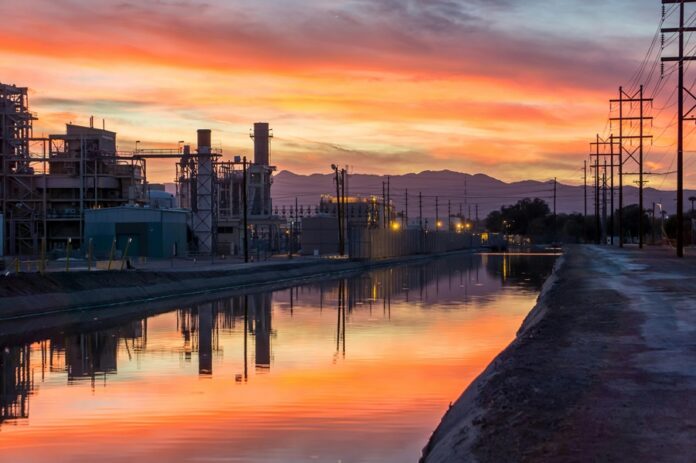Power plants play a crucial role in providing electricity for various industries and households. However, they also consume significant amounts of resources and generate environmental impacts. As such, it’s essential that power plants operate with maximum efficiency to minimize waste and reduce their carbon footprint. In this guide, we will explore eight practices that can help you manage your power plant’s efficiency effectively. From monitoring and maintenance strategies to incorporating renewable energy sources, we’ve got you covered. Let’s dive in!
Regular Monitoring and Analysis
The first step in managing power plant efficiency is to regularly monitor and analyze its performance. This includes tracking energy consumption, emissions, and overall equipment efficiency. By identifying areas of improvement through data analysis, you can make informed decisions on how to optimize your plant’s operations.
Implementing Maintenance Strategies
Preventive maintenance is crucial for ensuring the smooth operation of a power plant. By regularly servicing and repairing equipment, you can reduce downtime and prevent costly breakdowns. Additionally, implementing predictive maintenance techniques such as vibration analysis and thermography can help detect potential issues before they escalate.
Having a team of well-trained and empowered employees is essential for managing power plant efficiency. Ensure that your staff receives proper training on operating procedures, maintenance techniques, and safety protocols. Additionally, empowering them to make decisions and suggest improvements can lead to increased efficiency and innovation.
Incorporating Automation
Automation can significantly improve the efficiency of power plant operations. By automating processes such as data collection, equipment control, and maintenance scheduling, you can reduce human error and optimize energy consumption. This also frees up time for employees to focus on critical tasks that require human expertise.
Don’t forget to regularly oversee and update automation processes in your power plant. As technology advances, new and more efficient automation systems become available. By consistently reviewing and updating these processes, you can ensure that your plant is operating at maximum efficiency. Additionally, regular monitoring allows for early detection of any malfunctions or errors in the automation system, preventing potential disruptions to operations.
Utilizing Renewable Energy Sources
Incorporating renewable energy sources such as solar, wind, and hydro power can help diversify your power plant’s energy mix and reduce its carbon footprint. With advancements in technology, these sources are becoming more affordable and accessible, making them a viable option for power generation.
The process of incorporating renewable energy sources into a power plant can vary depending on various factors such as the size and type of plant, availability of resources, and regulatory requirements. It can take anywhere from a few months to several years to fully transition to renewable energy sources. However, by starting small and gradually increasing the use of renewables, power plants can make a smooth and efficient transition. Consider that many governments and organizations are implementing policies and incentives to encourage the adoption of renewable energy, making it easier for power plants to switch in the long run.
Continuous Training and Education
Providing continuous training and education to employees can help them stay updated on the latest technologies and best practices in power plant management. This can lead to improved efficiency, reduced maintenance costs, and a safer working environment for all.
Waste Management Strategies
Power plants generate various types of waste, including ash, sludge, and emissions. Implementing effective waste management strategies not only reduces environmental impacts but also improves overall efficiency by minimizing resource consumption and disposal costs.
To keep employees safe during waste management, proper training on handling and disposing of hazardous materials is crucial. This includes providing appropriate protective gear and equipment, as well as educating employees on safety protocols and emergency procedures. Implementing regular maintenance and inspection programs for waste management systems can also help identify potential hazards and prevent accidents.
Contingency Plans
Having contingency plans in place is crucial for managing power plant efficiency. These plans should outline actions to be taken in case of unforeseen events such as equipment failures, natural disasters, or supply disruptions. By having a plan in place, you can minimize downtime and mitigate potential losses.
In addition to contingency plans, having backup power is also essential for managing power plant efficiency. This ensures that in the event of a power outage or disruption, your plant can continue to operate without significant interruptions. Backup generators, boilers from Nationwide Boiler, or other emergency power sources should be regularly maintained and tested to ensure they are in working order when needed. By having reliable backup power, you can avoid costly downtime and maintain consistent electricity supply for your customers.
Regular Energy Audits
Conducting regular energy audits can help identify areas where energy is being wasted and find opportunities for improvement. This involves analyzing energy consumption patterns, identifying areas of high consumption, and implementing solutions to reduce waste.
It’s recommended to conduct energy audits at least once a year, but depending on the size and complexity of your power plant, more frequent audits may be necessary. Once the audit is completed, it’s crucial to act upon the findings and implement any necessary changes or improvements. Regularly reviewing and acting upon energy audit results can help ensure that your power plant maintains its efficiency and continues to operate sustainably.
Managing power plant efficiency requires effort from every working part of the pipeline. By implementing these practices, you can not only improve the efficiency of your power plant but also reduce its environmental impacts and operational costs. Remember, small improvements in efficiency can lead to significant long-term benefits for both your organization and the planet. Keep striving towards a cleaner and more sustainable future!






